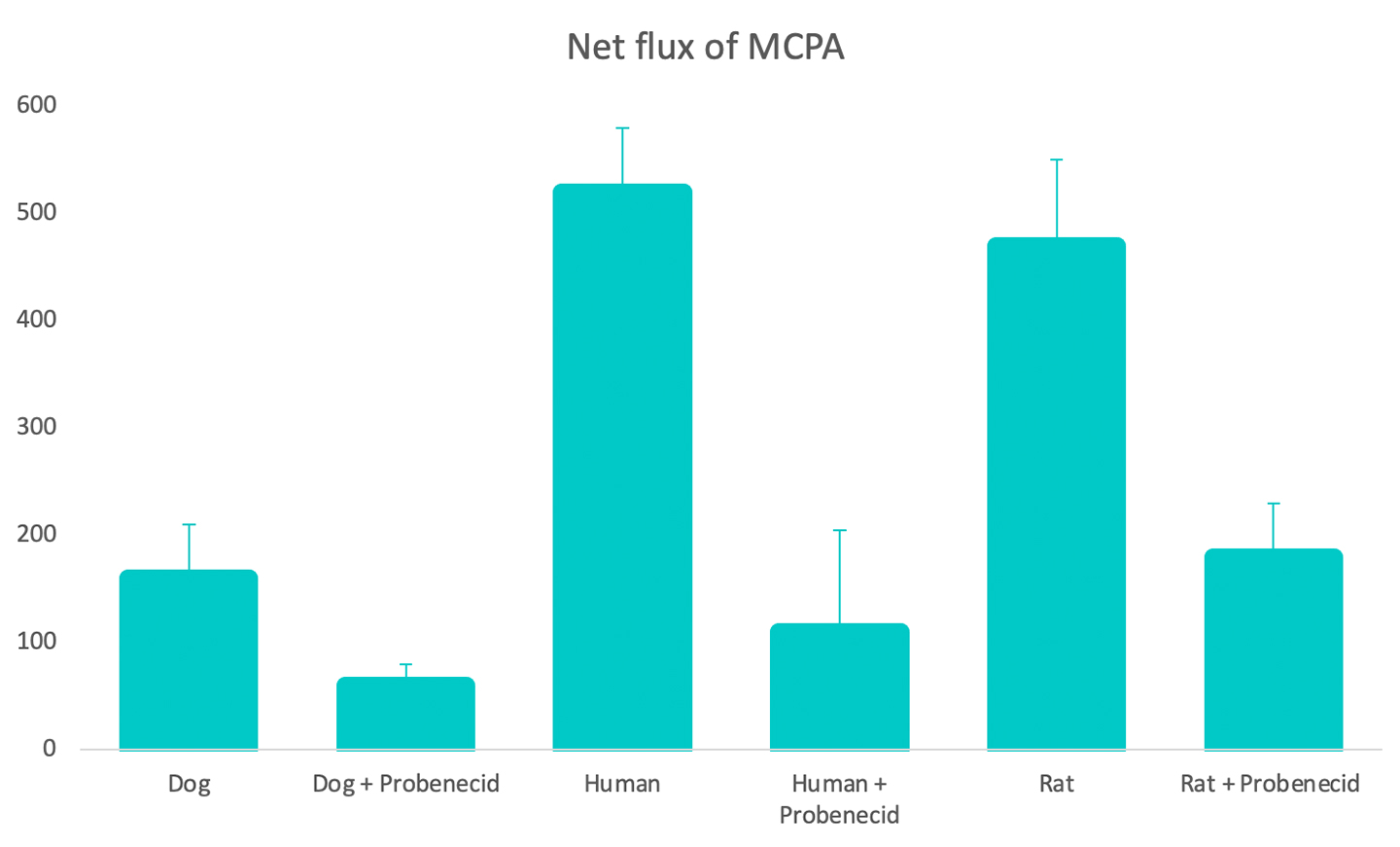The chlorophenoxy herbicide MCPA: A mechanistic basis for the observed differences in toxicological profile in humans & rats vs dogs.
A collaborative project has investigated renal toxicology following exposure to the herbicide MCPA to elucidate the molecular basis of species differences observed.
Toxicological investigations using MCPA identified the kidneys as the primary target organ following oral dosing in rat, mouse and dog. Toxicokinetics of MCPA and other derivatives in rodent and non-rodent models concluded that kinetic differences in the dog suggest that this species is less relevant to human risk assessment than rodents.
This work aimed to establish the molecular basis for the greater sensitivity of the dog to the toxic effects of MCPA compared with the human and rat. This was performed by in silico modelling of existing metabolism and pharmacokinetic data to predict repeat dose systemic exposure in rat, dog, and human, and by in vitro plasma protein binding (PPB) assays and in vitro renal transporter studies using Newcells aProximate proximal tubule cell (PTC) model derived from rat, dog and human. The data were evaluated provide a mechanistic rationale for the higher systemic exposures in the dog compared to those seen in other species and therefore support the lack of relevance of dog for MCPA human health risk assessments.
Find out more on our species comparison page
The secretory flux of MCPA into urine is primarily an organic anion transporter-mediated transport event, with either OAT1 or OAT3 as the most likely candidate transporters at the basolateral membrane.
This study shows that the difference in renal excretion and systemic exposure of MCPA between dogs and rats has been primarily attributed to species differences in active transporters (OAT1/OAT3), which was confirmed by a new in vitro flux study in renal proximal tubules, showing net secretion in rat and human of a similar magnitude but significantly less in dog. The net secretion of MCPA in the presence of probenecid in the rat and human indicates the potential involvement of another possible transport mechanism.

5th December, 2022
Alex Gledhill, Rachael Bowen, Michael Bartels, Andrew Bond, Git Chung, Colin D. A. Brown, Keith Pye & Tarang Vora
Share on social media:
Don't miss out on our latest innovations: follow us on Linkedin
View this resource
The chlorophenoxy herbicide MCPA: A mechanistic basis for the observed differences in toxicological profile in humans and rats versus dogs.
View the full article in the journal


